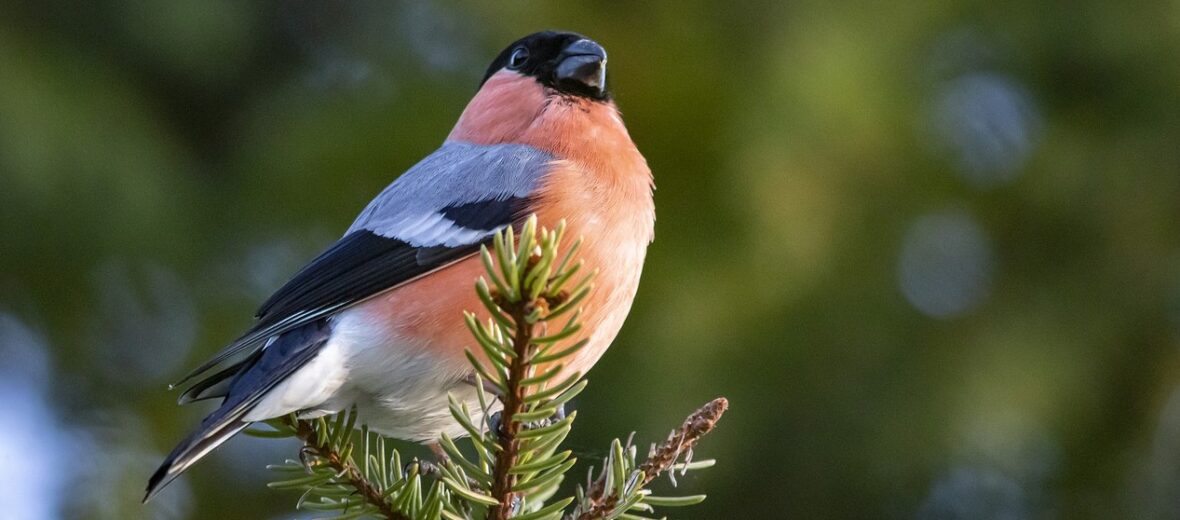
Ranging from Europe to Japan, the Eurasian bullfinch is a passerine bird (perching or song bird) that loves seeds and flower buds of certain fruit trees. They prefer habitats with mixed woodland that may contain conifers, including parks and gardens. The birds that inhabit the northern parts of their range will often migrate slightly south to avoid the freezing northern temperatures. Due to their numbers and wide range, these birds are listed as Least Concern by the IUCN.
First the Stats…
Scientific name: Pyrrhula pyrrhula
Weight: Up to 0.86 ounce
Length: Up to 6 inches
Wingspan: Up to 10+ inches
Lifespan: Up to 5 years
Now on to the Facts!
1.) These birds aren’t typically seen in large flocks, sans breeding season.
2.) Bullfinches are typically shy and relatively quiet.
3.) When they do sing, they make a mournful sounding “pew” call.
4.) Morello cherry blossoms and pear blossoms are their favorite food. Kale, quinoa, and millet are also enjoyed.
5.) A group of bullfinches is called a lowing, bellowing, or volery.
But wait, there’s more on the Eurasion bullfinch!
6.) Farmers, in years past, have not been too fond of these finches, as they damage fruit bearing tree fruit production by consuming buds. In the past, thousands of birds were trapped and killed as a result. Even though a fruit tree can lose up to half of its buds and still yield a successful harvest.
7.) Bullfinches are monogamous (mate for life) birds that can breed 2 – 3 times a season.
Did you know…?
Once being popular cage birds, they can be taught to imitate whistles and bird flutes.
8.) Females yield 4 – 7 eggs each clutch that incubate in up to 14 days.
9.) The male collects the nest building materials while the female builds the nest.
10.) The male and female share incubation duties and they bring each other food, while incubation is occurring.
Now a Short Eurasion Bullfinch Video!
Be sure to share & comment below! Also, check out the Critter Science YouTube channel. Videos added frequently!
Want to suggest a critter for me to write about? Let me know here.



